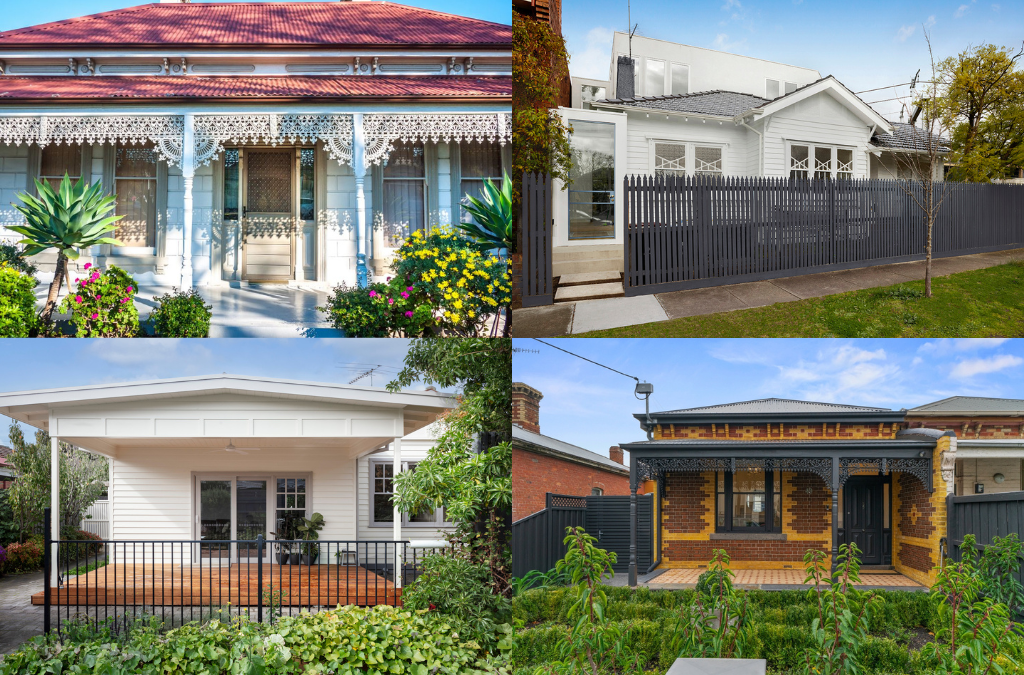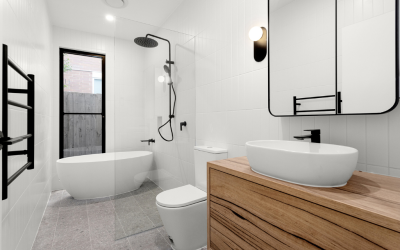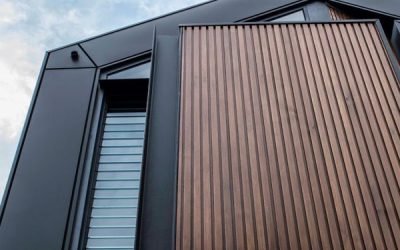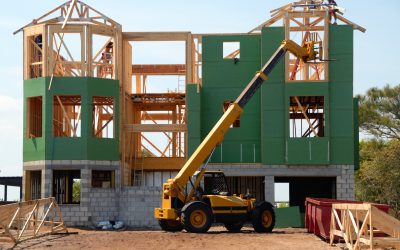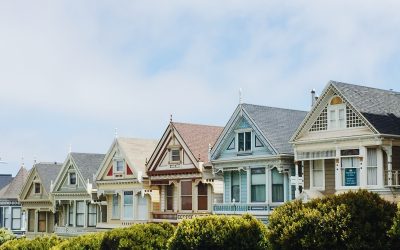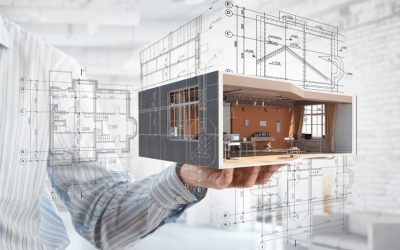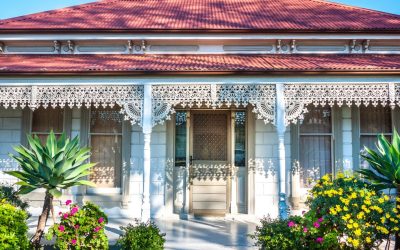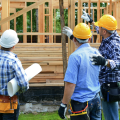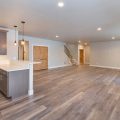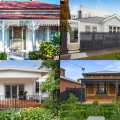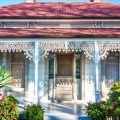We all know that Melbourne is known for its rich cultural heritage, boasting an impressive and diverse variety of architectural styles that reflect the city’s historical progression and diverse influences. From ornate Victorian homes to sleek pre-1970 modernist designs to the houses we see going up in developments every day, each style of houses Melbourne wide offers a unique glimpse into the past.
Today, let’s dive into the main Melbourne house styles – highlighting their cultural backgrounds, key exterior and interior features and house colour schemes. Enjoy!
1. Early Victorian (1840 – 1860)
Cultural: This era marked the beginning of Melbourne’s incredible architectural journey. Influenced by Britain, these homes were built during a period of rapid expansion and prosperity – thanks to the gold rush.
Exterior: Early Victorian houses are characterised by their simple, formal appearance, and often pitched, hipped roofs made of timber shingles, slate or corrugated iron. Walls were either face brick, rendered to resemble stone, or weatherboards, while windows were typically timber, centrally placed, and often double-hung.
Interior: In a word? Modest. Think plaster walls, small cornices and unadorned ceilings, with skirtings and architraves that are moulded but not elaborate. Fences were simple pickets, and gardens included a variety of vegetables and fruit trees.
Colours: They range from natural slate to painted finishes in cream, brown and deep Indian red.
2. Mid-Victorian (1860 – 1875)
Cultural: This period saw increased ornamentation and the influence of Italianate styles as Melbourne grew in wealth and confidence.
Exterior: Featuring multi-coloured brickwork or rendered walls, with decorative brackets under eaves and verandahs with cast iron lacework, the windows were typically double-hung and timber-framed.
Interior: Much more elaborate, with large skirtings, ceiling roses and decorative cornices. Timber lining boards were polished or painted, and walls were often wallpapered.
Colours: External walls were often red or brown brick with white or cream highlights, while rendered walls were lime-washed, with trims using darker, stronger colours.
3. Late Victorian (1875 – 1901)
Cultural: Late Victorian homes reflect the prosperity of the time, with grander and more ornate designs incorporating elements of the Italianate style.
Exterior: These houses had intricate iron lacework, complex tiled patterns and elaborate ornamentation. Roof designs were sometimes patterned slate, and walls featured multi-coloured or tuck-pointed brickwork.
Interior: Think lavish! That’s varied and stronger colour schemes, elaborate wallpapers, and extensive internal ornamentation.
Colours: It’s a colour palette featuring strong and vivid hues – like deep Indian red, light straw and deep Brunswick green.
4. Queen Anne (1895 – 1910)
Cultural: Derived from English and American styles, Queen Anne homes introduced a picturesque complexity to Melbourne’s suburbs.
Exterior: Think of steeply pitched terracotta tiled roofs, extensive decorative embellishments, and asymmetrical floor plans. Gable ends often featured roughcast or stucco.
Interior: Inside, you’ll find plaster walls with picture rails, leadlight windows and ornate fireplaces. The ceilings were sometimes divided into decorative panels.
Colours: On the outside, you’ll see strong colours like red brick with cream trims, while the interiors favoured earthy tones like dark brown and olive green.
5. Edwardian (1901 – WWI)
Cultural: Edwardian houses, perhaps better known as Federation homes, combine Victorian and Queen Anne elements – marking the transition into the 20th century.
Exterior: Characterised by red brickwork, bull-nosed verandahs and timber fretwork, these houses often had grouped windows.
Interior: They maintained Victorian ornamentation with plaster cornices, ceiling roses, and stained glass windows.
Colours: The palette includes pale cream, Venetian red, and mid Brunswick green – with terracotta tiled roofs as the standard.
6. Bungalow (1910 – 1930)
Cultural: Influenced by the Arts and Crafts movement, Bungalows were designed for simple, natural living.
Exterior: Usually single-storey with gabled roofs and verandah piers, these homes had walls of red brick, roughcast or weatherboard. Windows often featured small panes or stained glass.
Interior: Inside, it’s rustic – with timber trims, painted plaster walls and unadorned ceilings.
Colours: The most common were light stone, dark green, and deep Indian red.
7. Inter-war (1918 – 1939)
Cultural: Reflecting economic stringency and a move towards modernism, Inter-war homes were simple and functional.
Exterior: Think uncomplicated plans, horizontal design emphasis and limited ornamentation. Porches replaced verandahs, and brickwork was patterned.
Interior: Decorative paint schemes, Art Deco motifs, and mass-produced elements like linoleum flooring.
Colours: They range from white and off-white to pale ochre – and maybe a little bit of and fern green!
8. Post-war (1945 – 1965)
Cultural: After the war, we get a shift from austerity to prosperity – and that means bigger homes and family living.
Exterior: Think triple-fronted brick-veneer, a carport and garage, big windows – but minimal decorative flourishes.
Interior: You’ll find melamine bench tops, the generous use of glass, and mass-produced sheet materials for lining boards.
Colours: Pale blue, canary yellow, signal red!
9. Modern (1945 – 1970)
Cultural: Modernist homes embrace open planning, simplicity and innovative use of materials.
Exterior: These houses often had flat roofs, large floor-to-ceiling windows and bold geometric shapes. Walls were either brick or rendered and painted in light colours.
Interior: Minimalistic, with flat plaster walls, small skirtings and the odd textured feature wall.
Colours: Usually cream, white, salmon pink and fern green.
A journey through Melbourne house styles
The house styles Melbourne people and visitors are familiar with offer a window into the deep and diverse past – showcasing the city’s rich architectural heritage and cultural evolution. Explore East Melbourne’s Victorian terraces or the modernist homes of the suburbs and far, far beyond – and realise that the region’s diverse architectural styles provide an incredible insight into the story of Melbourne’s vibrant and exciting history.
For expert renovation and extension services that respect and enhance these unique Melbourne house styles, RFT Solutions provides comprehensive design and drafting services tailored to your needs. Transform your home today with our help – so feel free to reach out!

